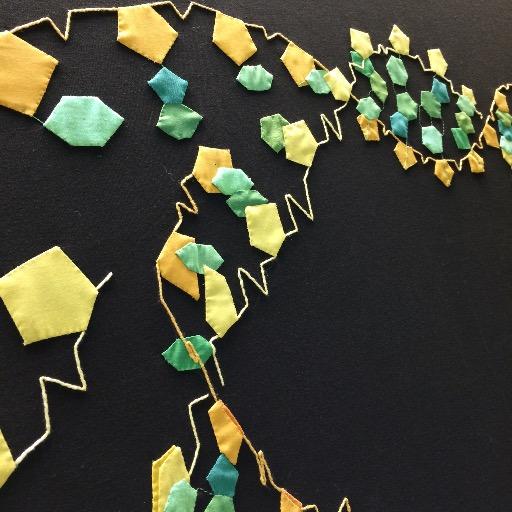
Aleph Physics
@alephphysics
You might like
New parts of the #brain become active after students learn #physics medicalxpress.com/news/2018-05-b…
Waves of any sort can bend around corners and spread out when passing through an aperture. This is called diffraction. The smaller the aperture (in relation to the wavelength), the more it diffracts. #physicslesson
There are two types of lenses. Converging lenses look like () and cause light rays passing through to refract toward each other. Diverging lenses look like )( and cause rays to refract away from each other. #physicslesson
When light moves from one substance to another, it changes direction. This is called refraction. Snell’s Law states that n₁ sin(θ₁) = n₂ sin(θ₂). The n’s are dependent on the substance. #physicslesson
The Doppler effect applies to EM waves just like mechanical waves: When the source and receiver are moving toward each other, the observed frequency is higher. (If you approach a yellow object fast enough, it will appear green!) #physicslesson
Faraday: changing magnetic field creates electric field. Maxwell: changing electric field creates magnetic field. So you can have a feedback loop where both fields continually induce changes in each other, moving through space. This is an electromagnetic wave. #physicslesson
Charge creates electric field. But Faraday’s Law describes another source of electric field... a changing magnetic flux. If the magnetic flux through a loop of wire changes, there is an induced electric field and hence an induced current through the loop. #physicslesson
A current-carrying cylindrical coil of wire will produce a strong, nearly uniform magnetic field passing through its interior from one end (“south pole”) to the other (“north pole”). It’s magnitude is proportional to the current and how tightly wound it is. #physicslesson

A current-carrying loop will spin when in a uniform magnetic field. This is the mechanism that allows a simple electric motor to convert electricity into motion. #physicslesson
A charged particle moving perpendicular to a uniform magnetic field will travel in a circle at constant speed. The speed, the radius of the circle, and the field strength are related by the equation rqB = mv. #physicslesson
There is a magnetic field B of varying strength and direction at every location in space, exerting a force on all *moving* charged objects. The magnitude of the force is F=qvB sin(theta). The direction of the force is perpendicular to the velocity and the field. #physicslesson
Resistors R1 and R2 connected in series have an equivalent resistance of R1+R2. If connected in parallel, it’s 1/(1/R1+1/R2). #physicslesson
When two ends of a conductor are given a difference in potential, a current will flow from high voltage to low voltage. “Resistance” is the voltage difference per amp... ΔV = IR. For many materials, called “ohmic”, resistance is constant. #physicslesson
When electric charge moves, we can measure how much charge passes any given point per second. This is called *current*. It is measured in joules/second, or amperes. #physicslesson
A capacitor consists of two conductors separated by a distance. Putting equal and opposite charge on them creates a potential difference between them. The *capacitance* is the charge needed to create 1 V. It is measured in C/V, or Farads. #physicslesson
Electrical conductors (like metals) have some electrons that can move freely within the material. They will always arrange themselves so that there is *no* electric field within the interior. This also means all parts of the conductor are at a single potential. #physicslesson
There is an electric potential V at every point in space. It is a number, not a vector, and it decreases as you move in the direction of the electric field. It is measured in volts (joules per coulomb). It is the potential energy per C of a target charge. #physicslesson
An electric dipole placed in a uniform electric field will not accelerate, but it will rotate back and forth.
United States Trends
- 1. LINGORM HER AND HERS FANCON 33.8K posts
- 2. #BUNCHITA 1,425 posts
- 3. Tulane 4,388 posts
- 4. Frankenstein 79.8K posts
- 5. #SmackDown 46.6K posts
- 6. Giulia 15.1K posts
- 7. taylor york 8,366 posts
- 8. Supreme Court 181K posts
- 9. Aaron Gordon 4,454 posts
- 10. #TheLastDriveIn 3,990 posts
- 11. #River 4,511 posts
- 12. Russ 14K posts
- 13. #TheFutureIsTeal N/A
- 14. Justice Jackson 5,843 posts
- 15. Connor Bedard 3,107 posts
- 16. Gozyuger 1,856 posts
- 17. Podz 3,130 posts
- 18. Tatis 2,158 posts
- 19. Pluribus 30.8K posts
- 20. Scott Frost N/A
You might like
Something went wrong.
Something went wrong.














